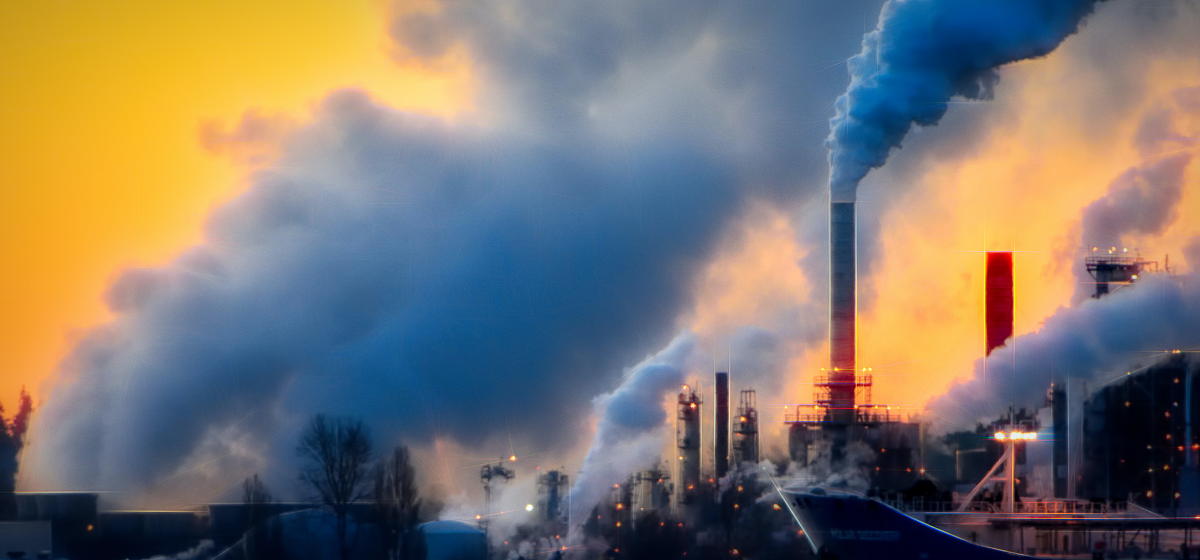Strengthening the Safeguard Mechanism: improving proposed policy settings
Australia cannot meet our legislated emissions reduction targets and make real progress on tackling harmful climate change if we do not get the Safeguard Mechanism right.
If polluters within the Safeguard Mechanism don’t pull their weight, every other part of our economy and community will have to do more – families and businesses alike.
Australia needs to cut our emissions by far more than 43% to avoid the worst impacts of harmful climate change. How we set up the Safeguard Mechanism will determine whether this target ends up being a floor or a ceiling.This briefing note has been developed in response to the Australian Government’s Safeguard Mechanism Reforms Position Paper. There are two key areas in which these proposed settings should be strengthened to ensure the Safeguard Mechanism drives the deep and genuine reduction in industrial emissions Australia needs now to tackle harmful climate change.
Key issue #1 – The Safeguard Mechanism must achieve genuine emissions reduction
Facilities regulated by the Safeguard Mechanism are currently required to purchase and surrender Australian Carbon Credit Units (ACCUs) if they exceed their emissions baseline. The government is establishing a second set of credits to operate alongside ACCUs in accounting for harmful emissions, called Safeguard Mechanism Credits (SMCs). The government’s Position Paper proposes that facilities regulated by the Safeguard Mechanism will be able to use any combination of ACCUs and SMCs to offset up to 100 percent of their harmful emissions.
This is highly problematic because unlimited use of offsets will simply encourage carbon accounting to cover up pollution-as-usual. The design of the Safeguard Mechanism should prioritise genuine emissions reduction, because tackling harmful climate change means Australia’s emissions must shrink rapidly this decade.
What’s it about?
ACCUs represent an amount of emissions that have notionally been reduced, removed or avoided – for example, through projects like tree planting or land restoration. Companies can purchase these offsets to ‘cancel out’ emissions produced by their operations. SMCs are intended to operate in a similar manner; they will be created when companies within the Safeguard Mechanism cut emissions below their assessed baseline. Because SMCs will be created through reductions in emissions by facilities within the Safeguard Mechanism, they are the most directly comparable type of offset to the emissions produced within this scheme.
The use of offsets is supposed to be a last resort, for dealing with the small share of emissions that cannot be avoided or reduced. Unfortunately, at the moment paying for offsets is the first and only thing too many big companies are doing about their harmful emissions. Further, planting or regenerating trees is not directly equivalent to stopping harmful pollution. Forests may be killed in the future, by repeated fires and droughts, which are increasing with climate change. Meanwhile, the harmful pollution they are supposed to be offsetting will remain in our atmosphere for many years. That’s why it is essential we stop harmful emissions at the source.
The government has proposed that companies which have emissions higher than their baseline can use any combination of ACCUs and SMCs to offset this excess pollution. They are not proposing any limit on the total amount of offsets facilities can use, or even require them to demonstrate efforts to genuinely cut their emissions.
Why does it matter?
If facilities regulated by the Safeguard Mechanism have unlimited, ongoing access to offsets, they will be much less likely to make the investments needed to genuinely – and permanently – reduce their emissions. This is because it will continue to be cheaper and easier to account for emissions by buying offsets, than to make genuine cuts by investing in process and technology changes. For example, analysis by the federal Parliamentary Library found that the cost of buying ACCUs to comply with new Safeguard Mechanism requirements for Australia’s large mining and gas corporations could be less than 0.1 percent of these multinational firms’ significant profits.
A strong Safeguard Mechanism would send a clear signal to high emitting businesses to start transforming for the net zero future ahead. Unlimited, ongoing access to offsets sends the opposite signal, and will likely see these facilities simply keep polluting as usual in the years ahead.
Recommended improvements
To ensure the Safeguard Mechanism sends the right investment signal to industry, the proposed settings should be strengthened to clearly state that:
- Facilities must demonstrate practical steps and/or investments in train to genuinely reduce emissions before being able to purchase SMCs or ACCUs to meet their regulated baselines;
- Facilities must use SMCs to account for any remaining emissions before purchasing ACCUs, given their more direct equivalence to the type of emissions produced within the scheme;
- Use of offsets will be progressively phased down to a set percentage of a facility’s total baseline following an initial period to enable business planning and investment;
- All funding provided to facilities through the Powering the Regions Fund must be used to support business transformation by investing in genuine process and/or technology changes. Public funds should not be spent on purchasing offsets or pursuing technologies which have failed to demonstrate a clear emissions reduction benefit despite large amounts of prior funding – such as some carbon capture and storage technologies in the fossil fuel sector.
Together, these changes would help ensure the Safeguard Mechanism actively prioritises genuine emissions reduction.
Key issue #2 – Don’t open the door to new, high emitting fossil fuel projects
Every new highly polluting project that enters the Safeguard Mechanism will add to its overall emissions and the difficulty of achieving Australia’s national emissions reduction targets. This is particularly true for fossil fuel projects. Global expert consensus is clear that we cannot open further new coal or gas projects if the world is to have any chance of holding harmful warming to 1.5 degrees. In addition to putting a safe climate at risk globally, Australia’s proposed pipeline of new coal and gas facilities threaten to bring a huge amount of additional emissions into the Safeguard Mechanism. This will force existing facilities to work harder to ensure scheme emissions as a whole stay within the proposed carbon budget. Under the government’s proposed settings, the unrestrained use of carbon offsets by new coal and gas projects is also likely to hoover up the limited supply of high integrity offsets, making these more expensive and less available for the sectors that truly need them. For all these reasons, a reformed Safeguard Mechanism must regulate new coal and gas projects much more tightly than the government has initially proposed.
What’s it about?
The Safeguard Mechanism covers facilities that produce 100,000 tonnes or more of CO2-equivalent emissions a year. There are currently around 215 covered facilities, but this number is likely to rise as more facilities trigger the emissions threshold.
There are currently more than 100 new coal and gas projects in the development pipeline in Australia.Those likely to proceed this decade could generate enough emissions in 2030 for the coal and gas sector to exceed the Safeguard Mechanism’s entire emissions budget.
When it comes to climate change, coal and gas cannot be treated like everything else. These fossil fuels are the primary drivers of climate change, and no amount of offsetting can replace limiting new developments.
The government’s proposed settings do not differentiate between projects important to our future economy and those that will need to be phased out – like coal and gas. The only dedicated provision addressing new entrants is the application of international best practice baselines adapted for the Australian context. This is intended to ensure that any new facility commencing operation after 1 July 2023 uses the best low emissions technology available anywhere in the world. That is a step in the right direction but does not go far enough.
Under the proposed settings, new entrants will be given the same annual emissions decline rate that will be applied to existing facilities. They will be allowed unlimited use of ACCUs and SMCs to cover off their emissions obligations – meaning they can avoid reducing their pollution and buy offsets or credits instead. New entrants that are trade-exposed (including LNG) will have access to government assistance including a new $600 million Safeguard Transformation Stream under the Powering the Regions Fund. The door is even left open for new highly polluting facilities to get access to a more lenient baseline decline rate by applying for special status as a trade-exposed facility.
The only extra requirement being imposed on new coal and gas facilities is international best practice baselines, and these have not yet been defined. Theoretically they could represent a higher bar for important future-focused industries like steel than for coal or gas where step changes in international best practice are more limited.
Unless the Safeguard Mechanism is strengthened to apply tighter requirements to new highly polluting fossil fuel projects, other facilities will be forced to carry their weight. Further, their expansion will limit Australia’s ability to cut emissions by more than 43 percent this decade, in line with the scale of action needed to avoid the worst impacts of harmful climate change.
Why does it matter?
The impact of further fossil fuel projects on Australia’s domestic emissions could be enormous. It is estimated that planned new gas and coal projects could result in almost 1.7 billion tonnes more CO2-e emissions annually if they all proceeded. This is more than three times Australia’s annual emissions. A large portion of these emissions would be released overseas – where they would also lead to climate damage – but each project would also be responsible for an increase in domestic emissions. The increase has been estimated at around 146 million tonnes of CO2-e annually, which is more than the total emissions covered under the Safeguard Mechanism in 2020-21.
If Australia is serious about our international climate commitments and doing our part to keep global warming as close to 1.5 degrees as possible, we need to stop opening new coal, oil and gas projects. Climate policies such as the Safeguard Mechanism can play a key role in limiting the ongoing expansion of harmful fossil fuels.
Recommended approach
To strengthen how the Safeguard Mechanism deals with proposed new fossil fuel projects, we recommend the following further updates to scheme settings:
- New fossil fuel facilities should be required to account for all their emissions without reliance on Australian Carbon Credit Units (ACCUs).
This would mean that new coal and gas projects would need to first avoid and minimise emissions to ensure that they are as low as possible, and then acquire Safeguard Mechanism Credits (SMCs) to address any remaining emissions over their baselines. In practice, this means new fossil fuel entrants would be required to achieve net zero emissions from facility commencement, without the use of offsets outside the scheme.
Use of SMCs rather than ACCUs would keep the overall emissions reduction task within the Safeguard Mechanism. This would ensure that new entrants are future-focused projects that would be equipped to compete in a low carbon economy and would not derail the Safeguard Mechanism or Australia’s emissions reduction ambition.
- New coal and gas facilities should not have access to special deals or supports intended to help existing facilities cut their emissions.
This includes co-investment offered to trade-exposed facilities through the Powering the Regions Fund. The Safeguard Transformation Stream within the Fund should explicitly state that it is not available to new fossil fuel projects. Its defined purpose is to support decarbonisation activities of emissions-intensive trade-exposed facilities. The Fund should therefore focus its support on critical industries needed for decarbonising domestic and global economies – not fossil fuel facilities which are adding more fuel to the fire.
- Similarly, new fossil fuel projects should not have access to a more lenient baseline decline rate through proposed ‘trade exposed baseline adjustments.’
These adjustments offer lower baseline decline rates for a three-year period, for trade-exposed facilities that have an elevated risk of carbon leakage. These special conditions should be reserved for facilities in genuinely hard-to-abate sectors which are essential for Australia’s ongoing development in a net zero emissions economy.
A reformed Safeguard Mechanism can play an important role in driving the urgent emissions reduction Australia must now achieve. For the Safeguard Mechanism to deliver this, the new settings must be calibrated to prioritise genuine emissions reduction at every level. Furthermore, the scheme should ensure that any new facility which seeks to commence operations in Australia is set up to thrive as net zero increasingly becomes business as usual. This means placing much tighter restrictions on new coal, oil and gas projects within the Safeguard Mechanism.
There is much at stake in the reform of this key policy lever. But getting it right will deliver enormous benefits: continued prosperity in a zero emissions economy; new job and industry creation through innovation; and a safe and liveable environment for Australians – now and in the decades to come.
This briefing paper is written in partnership with the ACF.










